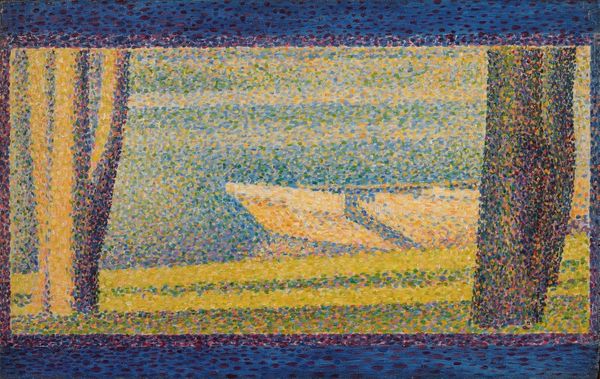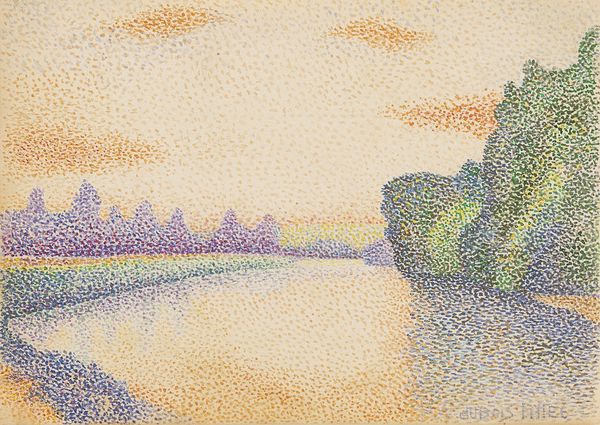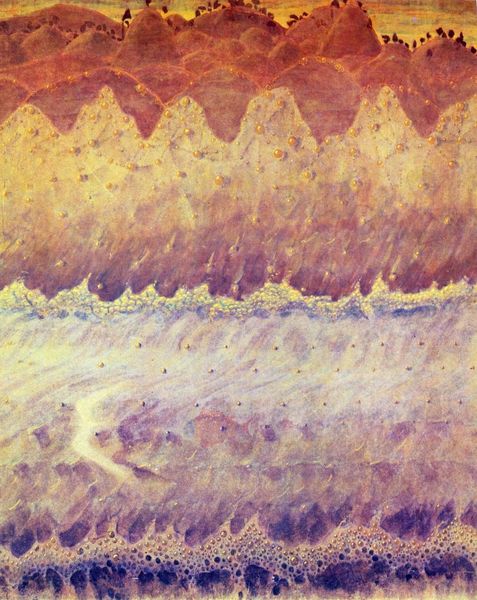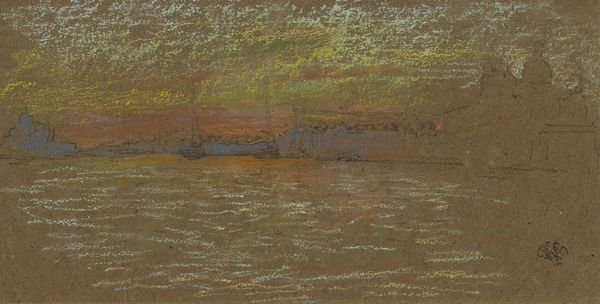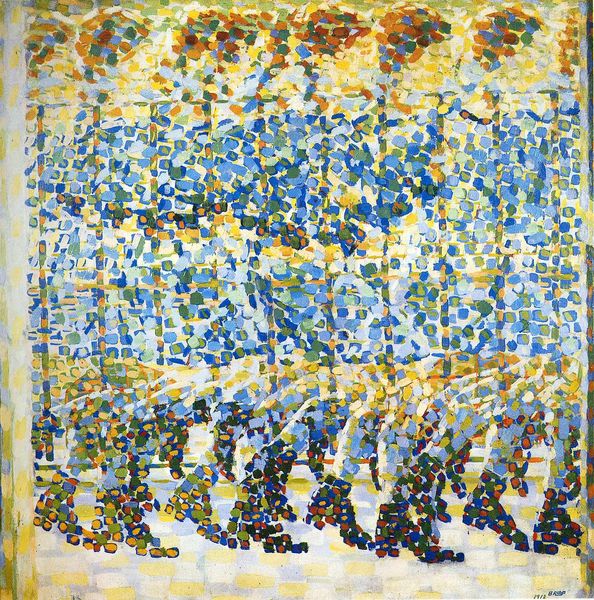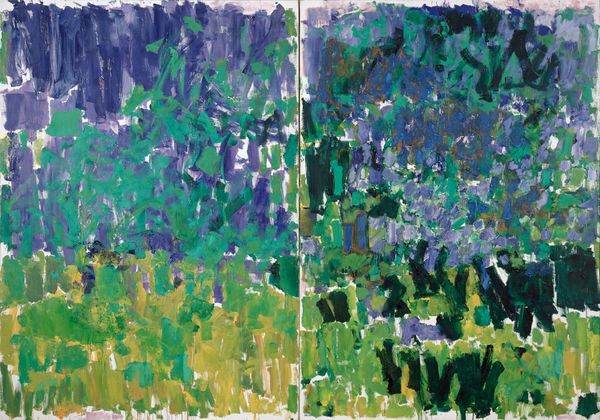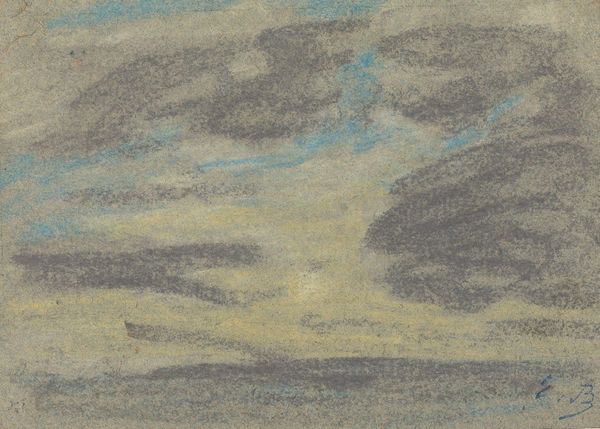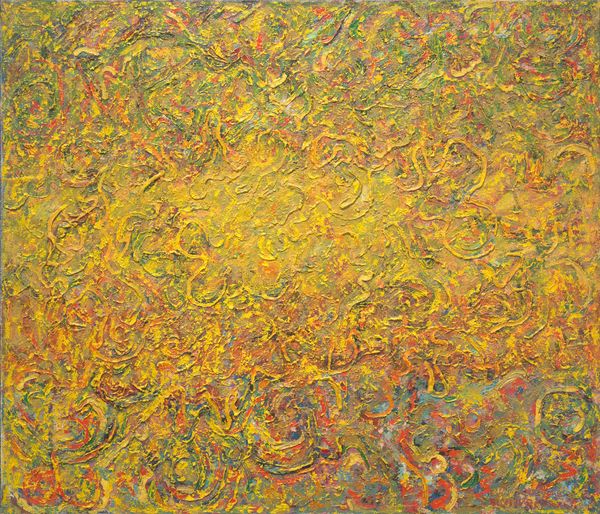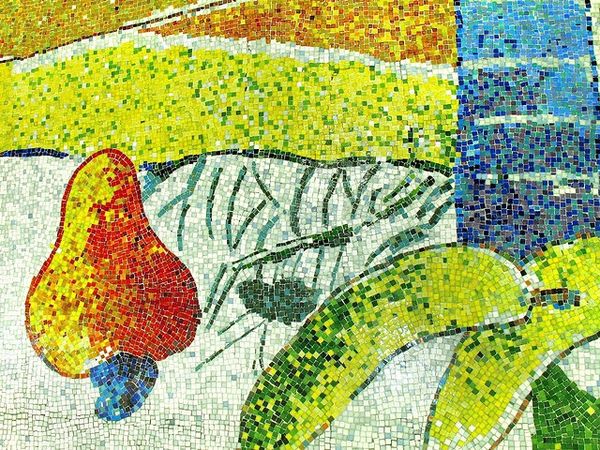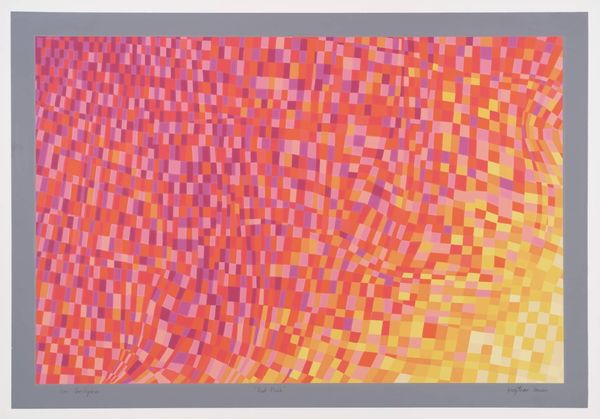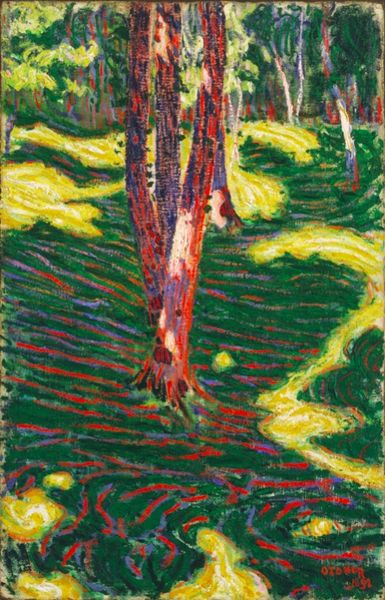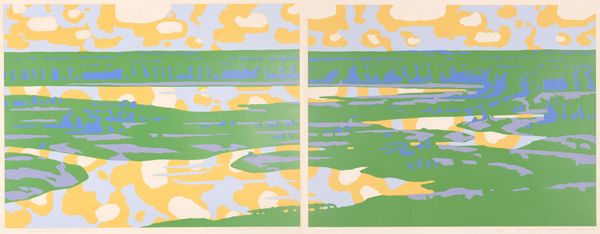
painting, oil-paint
#
painting
#
impressionism
#
oil-paint
#
neo-impressionism
#
landscape
#
geometric
#
post-impressionism
Dimensions: overall (inner panel): 16 x 25 cm (6 5/16 x 9 13/16 in.) overall (including painted frame): 21.5 × 30.5 cm (8 7/16 × 12 in.) depth (thickness of cradled panel): 1 cm (3/8 in.) framed: 34.29 × 43.18 × 5.87 cm (13 1/2 × 17 × 2 5/16 in.)
Copyright: National Gallery of Art: CC0 1.0
Curator: Standing before us is "Seascape (Gravelines)," a canvas rendered in 1890 by Georges Seurat. What are your initial thoughts? Editor: It strikes me as incredibly still, almost unnaturally so. Despite depicting a seascape, there's a remarkable sense of quietude and calm, very unlike traditional impressionistic depictions of seascapes from the time. Curator: Indeed. This tranquility is partly due to Seurat's Neo-Impressionist technique— the methodical application of tiny dots of color—known as pointillism. Observe how the myriad of dots create a unified scene when viewed at a distance. It reflects a search for order and structure that contrasts with Impressionism's spontaneity. Editor: Right, that restrained method contrasts deeply with what many artists tried to do with water at this moment. I am intrigued by its connection to ideas around industrial advancement and social control at the end of the century, a drive for order. Even the frame is painted in a pointillist style! How radical was that considered then? Curator: Framing his own work in this way definitely challenged artistic conventions. It asserted a unified artistic vision, extending beyond the conventional boundaries of the canvas. Furthermore, the meticulous technique symbolizes the artist's control over nature. The painting isn't just depicting the Gravelines seascape; it presents an idealized, almost utopian version of it. Editor: But the emotional impact, though subtle, lingers. The cool blues and warm yellows suggest a harmony but a somehow detached harmony— like an aesthetic blueprint for how the world *should* look and feel. Did he plan to use these scenes to set the tone for the next generation of French people? Curator: It's more likely that Seurat sought to discover underlying scientific principles within art, to distill fleeting sensory experience into lasting visual forms, rather than deliberately directing culture, but certainly a work like this participated in, and mirrored back, the desires of his cultural moment. He does seem determined to capture and control reality, an idea itself rife with cultural and psychological complexity. Editor: True, his attempts reveal a society grappling with progress, change and the place of human touch amidst an industrializing world. Thank you for offering fresh thoughts about the cultural and social implications of Seurat’s artistic choices. Curator: My pleasure! It’s always illuminating to consider how these iconic artworks reflect and shape our understanding of the world.
Comments
No comments
Be the first to comment and join the conversation on the ultimate creative platform.
